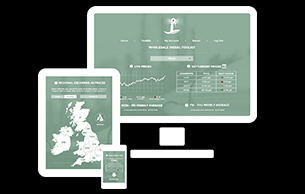In the present market, effective marketing is very significant for business triumph. Over time, modern marketing strategies have come up, changing conventional manoeuvres.
This development has made direct marketing even more important because brands can now directly correspond with their audience and get immediate replies from them.
What Is Direct Marketing?
Direct marketing is a strategy where businesses reach out to targeted customers through direct marketing channels such as emails, SMS, and social media to establish personal connections that will lead to immediate engagement or purchase.
Direct Marketing Vs. Marketing Channels
Direct Channels:
- Definition: An instant communication between businesses and customers.
- Examples: Email marketing, direct mail, telemarketing, social media messaging.
- Advantages: Personalised messages, immediate feedback, higher engagement.
- Disadvantages: It can be time-consuming and requires precise targeting.
Indirect Channels:
- Definition: Utilisation of intermediaries to access customers.
- Examples: TV ads, online ads, and partnerships with retailers or distributors.
- Advantages: Wider audience coverage; less direct effort by the business.
- Disadvantages: Less personalised; delayed feedback; higher costs incurred in reaching the target group.
Key Differences:
- Personalization: Indirect messages are general while direct channels offer tailored ones.
- Feedback: This feedback is instant in direct channels, but it is normally delayed in indirect channels.
- Cost: The intermediaries make the indirect channels more costly than direct channels, which can be cost-effective.
Common Channels Used for Direct Marketing
- Email Marketing: This is sending targeted emails to customers as a way of advertising products or services. It allows for customization, segmentation, and automation of emails, thus improving consumer involvement and conversion rates.
- Social Media Marketing: These are platforms such as Facebook, Instagram, and Twitter that enable companies to communicate directly with their target audience. The process involves content creation and sharing, advertisements running on these sites, and interacting with followers to build loyalty towards the brand.
- SMS Marketing: This is sending promotional messages straight into the mobile phones of clients. It has high opening rates and immediate response hence its effectiveness when there are time-based deals and updates.
- Direct Mail: Materials such as booklets, guides, or mailers that are promptly posted to the clients. It can provide a touchable link and can be extremely well aimed at customer information.
- Telemarketing: Talking directly to potential customers through telephone conversations. Immediate feedback, personalised interaction, and handling of customer questions in real-time are its advantages.
- Personal Selling: Personal selling is the direct interaction between salesman and buyers. This establishes strong relationships, allows for personal presentations, and gets immediate responses to consumer needs and objections.
- Print Advertising: The placement of ads in newspapers, magazines, or other print media; it covers a wide audience and could be focused on publication readership demographics.
- Experiential Marketing: Aim at giving customers immersive experiences where they are fully involved. Events, pop-up shops, and interactive installations among others expose them more emotionally to the brand than traditional advertising does.
- Online Advertising: It’s the use of digital ads on web pages, search engines, or social media platforms. This can be a banner, video, or sponsored content that allows for real-time analytics, and precise targeting and comes in different formats.
- Websites/Landing Pages: Dedicated Web pages are built to capture leads and promote specific products or services. They have user-friendly designs, attractive call-to-actions, and engaging content to optimise conversion rates.
How to Choose the Right Direct Marketing Channel?
- Know Your Audiences: Get to know your audience’s likes and dislikes to enable you to employ the right marketing channels.
- Set Goals: For example, what is the aim of your campaign – increasing sales or gaining brand recognition? This will help you choose the right channel.
- Analyse Channel Performance: Examine historical data from previous campaigns to identify the best-performing channels for your business.
- Consider Budget Limitations: When selecting channels, evaluate how much it costs and whether it will bring back more money than spent on it.
- Use Technology: If you wish to improve processes and make your chosen channel efficient, try marketing automation tools.
How to Measure Success After Following Direct Marketing Channels?
- Monitor Conversion Rates: The ability to measure the percentage of recipients that take a desired action, such as making a purchase or signing up.
- Analyse Customer Engagement: One should check open rates, click-through rates, and social media interactions to measure customer interest and involvement. According to Campaign Monitor, the average email open rate across all industries is 21.33%, which can serve as a benchmark for assessing your email marketing performance.
- Calculate ROI: Comparing the revenues generated from a marketing campaign with its costs allows you to calculate returns on investments.
- Assess Customer Retention: Long term effectiveness of direct marketing can be measured by tracking repeat purchases and customer loyalty.
- Evaluate Lead Generation: Ensure effective targeting strategies by measuring the amount of new leads gotten through your campaigns as well as their quality.
Conclusion
In conclusion, selecting the right solutions for direct marketing channels and observing how they succeed in achieving their goal would enhance efficient customer engagement, greater return on investment, and sustainable business development. Apply these guidelines for better outcomes.


























